Have you ever picked up a lamb shoulder at the store and wondered how to turn it into perfectly portioned chops? You’re not alone! Cutting a lamb shoulder into chops might seem intimidating, but with a little guidance, it’s a skill you can easily master at home. Imagine being able to save money, customize your chop thickness, and ensure every part of the meat is used effectively—all while elevating your cooking game.
List Of Contents
Anatomy of a Lamb Shoulder
When you look at a lamb shoulder, you’re examining a part of the lamb that offers rich flavor and marbling. It includes muscles, connective tissues, and bones, all of which contribute to its tenderness when cooked properly. Unlike other cuts such as the leg or rack, the shoulder is a hardworking part of the animal, which means the meat is slightly tougher but packed with juicy goodness.
To break it down, the lamb shoulder consists of blade bones, shoulder blade muscles, and some connective tissues that bind everything together. Understanding this allows you to determine the best places to make your cuts. Check out more recipes here.
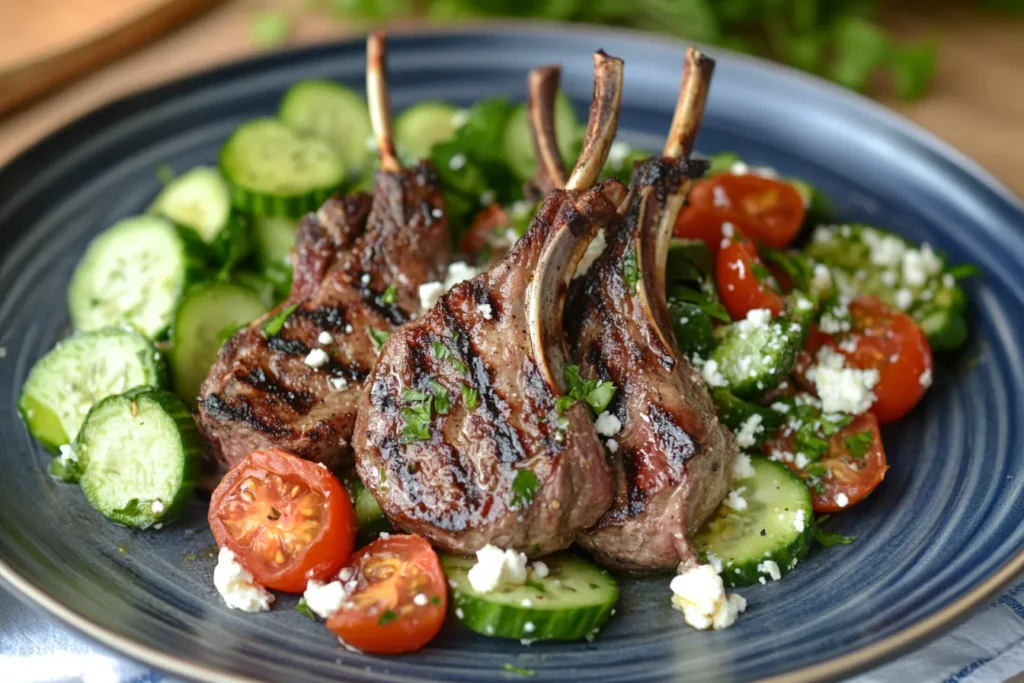
Differences Between Shoulder and Other Cuts
The shoulder is notable for its flexibility and cost-effectiveness. Unlike the smaller, tender loin chops or rib racks, the shoulder is ideal for roasting or cutting into larger, hearty portions. It may not be as delicate as a rack, but it’s much easier to customize to your taste and cooking needs. Check out more recipes here.
Benefits of Cutting Your Own Lamb Shoulder
Cost-Effectiveness
A major benefit of cutting your lamb shoulder at home is the cost savings. Pre-packaged chops at the store often come at a premium price because the butcher has already done the work. Learning to do it yourself allows you to save money while making the most of every part of the meat. Check out more recipes here.
Customizing Chop Thickness
Another great benefit? Control. Whether you prefer thick, hearty chops for a slow braise or thinner ones for quick grilling, you can decide. Customizing thickness lets you tailor each chop to your recipe, making your meals extra special. Check out more recipes here.
Tools You’ll Need
Essential Butchering Tools
Before you begin, gather the right tools. A sharp knife is a must-have for clean, precise cuts. You’ll also need:
- A sturdy meat cleaver
- A meat saw (for thicker bones)
- A spacious cutting board suitable for handling a lamb shoulder.
Using the right tools ensures a smoother experience and better results.
Importance of Sharp Knives
Never underestimate the importance of a sharp knife. A dull knife demands extra force, which heightens the chance of accidents. It can also tear the meat instead of slicing it, which impacts its texture and presentation. A freshly sharpened knife glides easily through both meat and bone. Check out more recipes here.
Preparing the Work Area
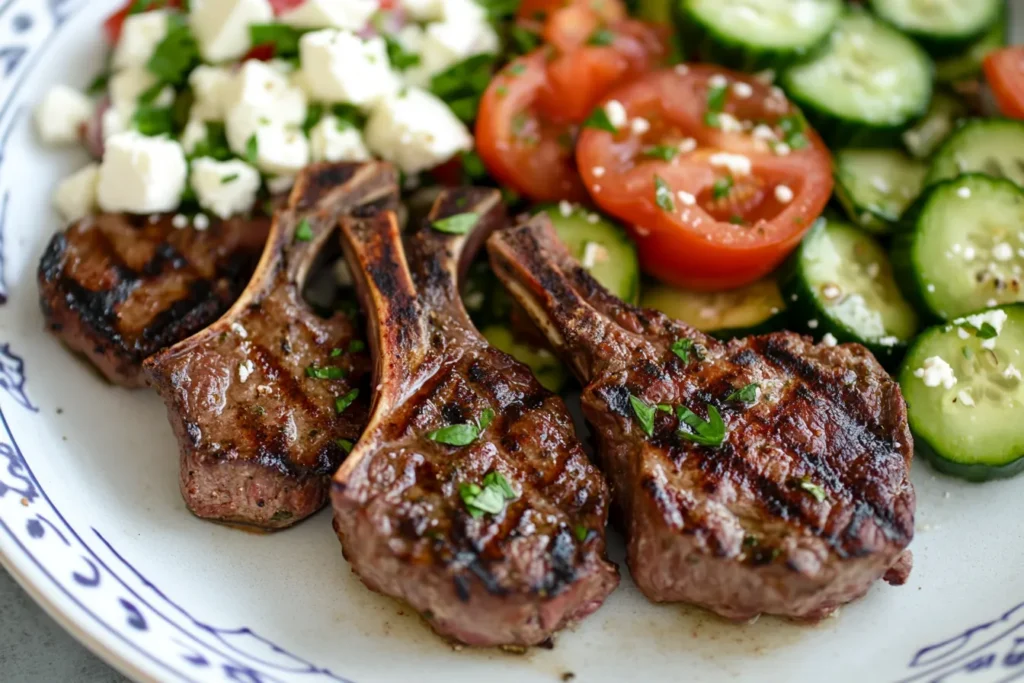
Choosing the Right Surface
Setting up a clean, safe workspace is essential. Opt for a large, non-slip cutting board. Wooden boards are ideal for stability, but plastic options are easier to sanitize. Ensure the surface is sturdy enough to withstand heavy chops without shifting.
Safety and Hygiene Tips
- Make sure to wash your hands thoroughly before working with raw meat.
- Use separate utensils for meat and other ingredients to prevent cross-contamination.
- Sanitize your cutting board and tools with hot water and dish soap after use.
Taking these precautions ensures your butchering process remains safe and efficient.
Getting the Lamb Shoulder Ready
Thawing the Meat
Make sure the lamb shoulder is fully thawed before you start. The safest way to thaw it is by leaving it in the refrigerator overnight. If you’re short on time, you can use a cold-water bath, but never thaw it at room temperature to prevent bacterial growth.
Removing Excess Fat and Skin
After thawing, check the meat for any large pieces of excess fat or skin. While a little fat enhances flavor, too much can lead to uneven cooking or a greasy texture. Use your sharp knife to trim these areas, being careful not to remove too much of the meat itself.
Identifying the Bone Structure
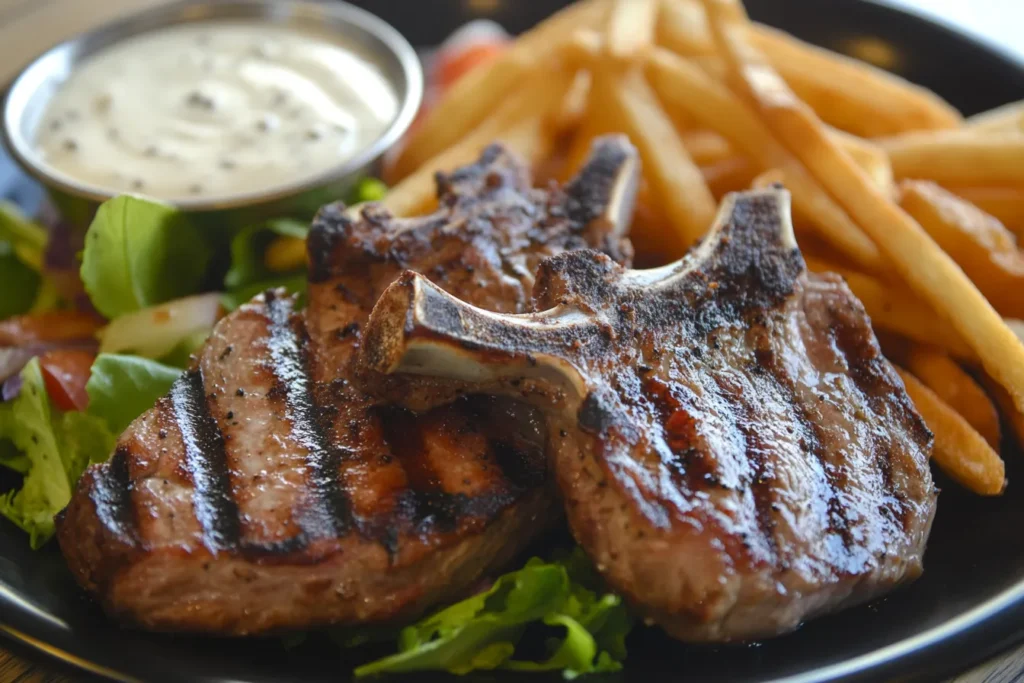
Key Bones to Note
The initial step in cutting a lamb shoulder into chops is familiarizing yourself with its bone structure. The shoulder contains several key bones, such as the scapula (shoulder blade) and humerus (upper arm bone). Knowing where these bones are helps you determine the best places to make cuts without damaging the meat.
You’ll also notice smaller, connective bones. They can serve as natural markers to guide your cuts. Take a moment to examine the meat and feel for bone edges with your fingers to get familiar with the layout.
Using the Bone as a Guide
Bones are your built-in markers for accurate and even cuts. Use them to help align your knife and create uniform chops. For example, when you reach the shoulder blade, angle your knife slightly to the side for a precise cut. This approach reduces resistance and preserves the integrity of your chops.
Marking the Chop Lines
Measuring Ideal Chop Thickness
Deciding how thick to make each chop depends on your cooking method. For grilling, opt for chops about 1 inch thick. For slow-cooking or braising, you can go a little thicker, around 1.5–2 inches. Use a ruler or visual estimate to maintain consistency.
Ensuring Even Cuts
Uneven chops can lead to uneven cooking. To avoid this, score the meat lightly with your knife along the places you plan to cut. These guide lines act as a template, making it easier to achieve uniform portions.
Making the First Cut
Techniques for Initial Incisions
The first cut is often the trickiest. Start by making a shallow incision along the natural seams of the meat. This method allows you to separate sections without sawing through too much at once. Hold your knife at a slight angle and let the blade do the work.
Avoiding Splintered Bones
To prevent splintered bones, avoid pressing too hard. If you encounter resistance, opt for a steady, sawing motion to maintain control. If you’re using a meat cleaver, ensure the blade is sharp and strike with a single, firm motion.
Cutting Through the Bone
Using a Meat Saw or Cleaver
A meat saw or cleaver is crucial for handling thicker bones. When using a meat saw:
- Position the blade at the marked line.
- Use slow, even strokes to avoid jagged edges.
- Let the saw’s weight do the work rather than forcing it through.
If you’re using a cleaver, aim carefully and strike in a downward motion with enough force to split the bone cleanly.
Maintaining a Steady Hand
A steady hand ensures both safety and precision. Keep a firm grip on the knife or cleaver and stabilize the shoulder with your non-dominant hand. Take breaks if needed to avoid muscle fatigue, which can affect your control.
Trimming the Chops
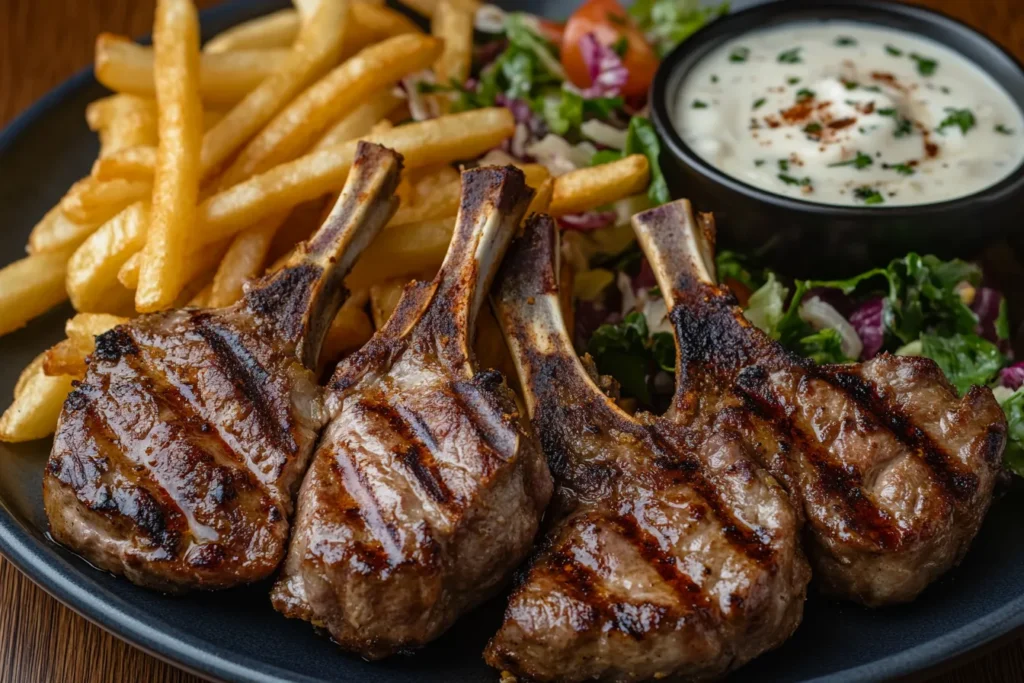
Removing Extra Fat
Once you’ve cut the chops, you’ll notice some areas may still have excess fat. Use your knife to carefully trim away these portions. A small amount of fat is good for flavor, so aim to leave a thin layer intact.
Shaping the Chops for Cooking
Finally, shape the chops by tidying up any uneven edges. This not only improves their appearance but also ensures they cook evenly. If desired, you can use kitchen shears to trim away smaller, hard-to-reach bits.
Common Mistakes to Avoid
Uneven Chops
One of the most frequent mistakes is creating uneven chops. This happens when you don’t measure the thickness consistently or rush through the cutting process. Uneven chops cook at different rates, leading to some pieces being overdone while others remain undercooked. To fix this, always mark your chop lines before cutting, and use steady, deliberate motions.
Damaging the Meat Texture
Another common issue is tearing the meat by using dull knives or excessive force. Torn meat affects both the presentation and the texture. To avoid this, keep your tools sharp and handle the meat gently. If you notice jagged edges, use a smaller knife to trim and smooth them.
Storing Your Lamb Chops
Proper Freezing Methods
Freezing lamb chops is an excellent way to preserve them for future use. To freeze properly:
- Wrap each chop tightly in plastic wrap to prevent freezer burn.
- Place the wrapped chops in a freezer-safe bag or container, ensuring there’s no excess air inside.
- Label the bag with the date, so you know when they were frozen.
For best results, use frozen lamb chops within 6 months.
Refrigeration Guidelines
If you plan to cook the lamb chops within a few days, refrigeration is sufficient. Store the chops in an airtight container or tightly wrapped in plastic wrap. Ensure they’re kept at a temperature below 40°F and use them within 3–5 days for maximum freshness.
Cooking Ideas for Lamb Shoulder Chops
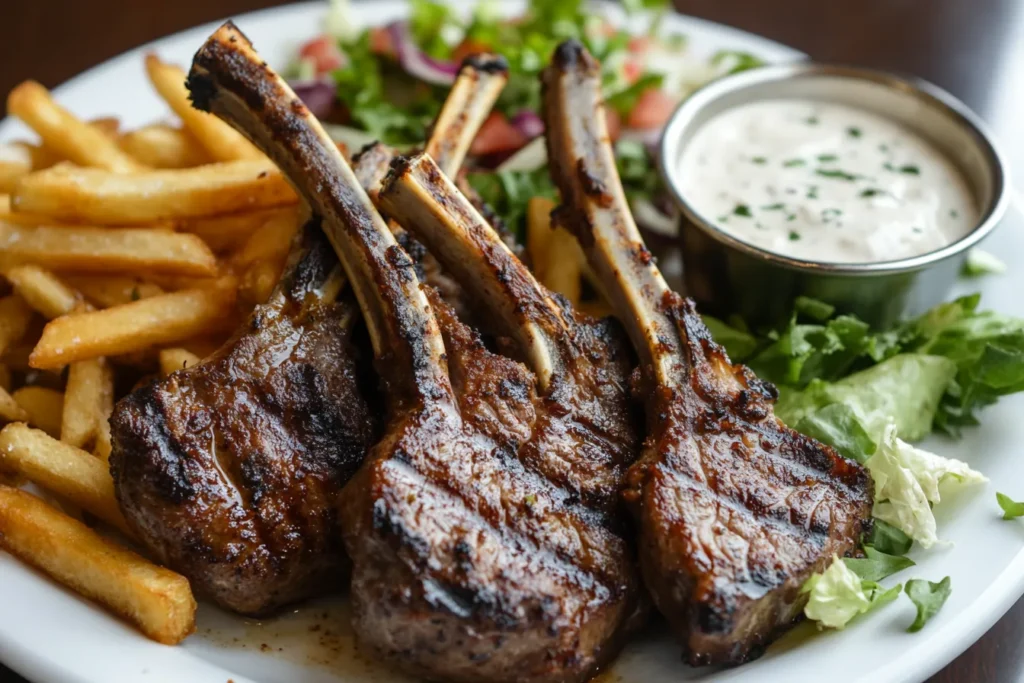
Grilling Tips
Grilling lamb chops is a popular method that brings out their smoky, rich flavor. To grill:
- Marinate the chops in a mix of olive oil, garlic, rosemary, and lemon juice for at least 30 minutes.
- Preheat the grill to medium-high heat.
- Cook each chop for about 4–6 minutes per side, depending on thickness, until they reach your desired level of doneness.
Pro tip: Use a meat thermometer to ensure the internal temperature reaches at least 145°F for medium-rare.
Braising for Tenderness
Braising is perfect for thicker chops, as it allows the meat to become incredibly tender. To braise:
- Sear the chops in a hot skillet with oil until browned on both sides.
- Add aromatics like onions, garlic, and herbs, along with a liquid such as broth or wine.
- Cover and simmer on low heat for 1–2 hours, or until the meat is fork-tender.
Sustainable Butchering Practices
Using All Parts of the Shoulder
When you butcher a lamb shoulder, try to utilize every part. Leftover bones can be used to make a rich lamb stock, which adds depth to soups and stews. Trimmings and smaller scraps of meat are perfect for making ground lamb or adding to stews.
Reducing Waste
Minimizing waste is both economical and beneficial for the environment. Save any usable fat for rendering, and compost any inedible parts when possible. This approach ensures that every part of the lamb is respected and used efficiently.
Exploring the Flavor Profile of Lamb Shoulder
One of the reasons lamb shoulder is so popular among chefs and home cooks is its rich, bold flavor. The marbling in this cut ensures that the meat remains juicy during cooking, while the connective tissues break down to release gelatin, adding depth to the dish. When cooked slowly, such as in braises or stews, the flavors intensify, creating a hearty and satisfying meal. Spices like cumin, coriander, or smoked paprika enhance its natural taste, while fresh herbs such as rosemary and thyme add an aromatic element. Lamb shoulder is also incredibly versatile in global cuisines, from Mediterranean dishes like roasted lamb with garlic and lemon to Indian curries that highlight its tenderness. This adaptability makes it a must-try cut for adventurous cooks.
Tips for Tender and Flavorful Results
Getting the most out of a lamb shoulder requires a balance between preparation and cooking techniques. For a truly tender result, slow-cooking methods such as braising, stewing, or roasting are ideal. These techniques allow the tough connective tissues to break down over time, ensuring the meat is fork-tender and packed with flavor. When grilling or pan-searing lamb shoulder chops, a quick marinade can make all the difference. Marinades containing acidic ingredients like yogurt, lemon juice, or vinegar help tenderize the meat, while olive oil and spices infuse it with flavor. Allowing the meat to rest before and after cooking is equally important. Resting before cooking lets the fibers relax, ensuring even heat distribution, while resting after cooking redistributes the juices, keeping each bite juicy and delicious.
Pairing Lamb Shoulder with Sides and Sauces
To elevate a lamb shoulder dish, pair it with sides and sauces that complement its robust flavor. Classic options include roasted vegetables, mashed potatoes, or couscous, all of which provide a hearty base for the rich meat. For a lighter contrast, consider fresh salads with citrus vinaigrettes or grilled asparagus for a pop of freshness. Sauces also play a key role in enhancing lamb dishes. Mint yogurt sauce is a traditional favorite, adding a cooling effect to the meat’s richness. Chimichurri, with its tangy and herby profile, is another excellent choice. If you prefer something bold, a red wine reduction or a garlic rosemary jus can take the dish to the next level. Pairing the right sides and sauces ensures a balanced and memorable meal.
FAQs
- What is the ideal thickness for lamb shoulder chops?
- Around 1 inch for grilling and 1.5–2 inches for braising.
- How long can lamb chops be stored in the freezer?
- Up to 6 months if wrapped and stored properly.
- What’s the best knife for cutting lamb shoulder?
- A sharp chef’s knife or boning knife works best.
- Do I need to remove all the fat?
- No, keep a thin layer to enhance flavor while cooking.
- Can I cut lamb shoulder without a cleaver?
- Yes, but a cleaver or meat saw makes cutting through bones easier.
- How do I avoid splintering the bones?
- Use a steady hand and sharp tools; avoid excessive force.
- What are the best cooking methods for lamb shoulder chops?
- Two highly effective methods are grilling and braising.
- How do I prevent the meat from tearing during cutting?
- Use sharp tools and a smooth slicing motion.
- Should I marinate lamb chops before cooking?
- Marination enhances flavor, especially for grilling.
- Is lamb shoulder tougher than other cuts?
- Slightly, but proper cooking methods like braising make it tender.
